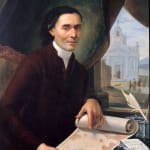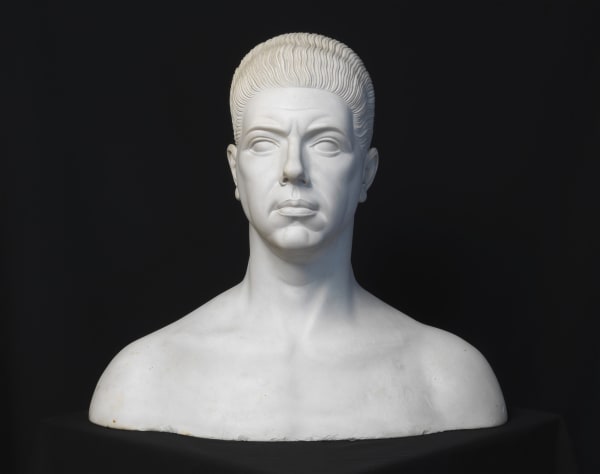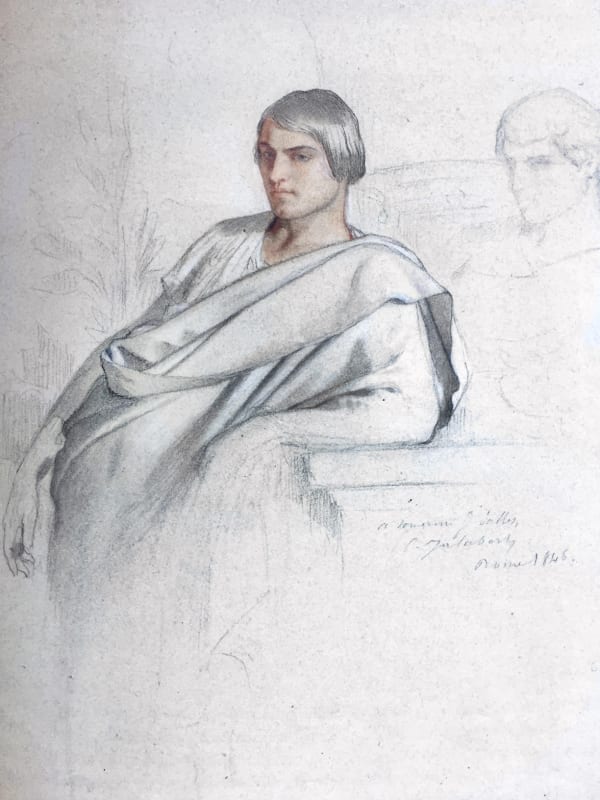

PIETRO LABRUZZI ROME 1739 -1805
The church of San Michele Arcangelo in Castel Madama was built to a design by the architect Pompeo Schianterelli in 1775. Pietro Labruzzi painted the altarpiece for the high altar, dedicated to St. Michael the Archangel (and now in the church of San Lorenzo) in the 1790s, but it was replaced in 1866 by a copy of Guido Reni’s St. Michael painted by a 19th century Austrian artist called M. Hardtmuth.
The fact that the plan which the sitter is holding in this portrait depicts the area of the high altar in the church may indicate that Giacomo Giustini was the patron who commissioned Labruzzi to paint the altarpiece.
From the 1770s on, the classicising reform of style and renewal of taste taking hold in Rome and spreading from Rome to inform every aspect of religious and other painting caused Labruzzi’s artistic vocabulary to become more rarefied on both the stylistic and the compositional levels.
Reflecting developments within the circle of artists working for Pope Pius VI, particularly Antonio Concioli and Antonio Cavallucci, Labruzzi’s painting began to acquire an increasingly dramatic tone in the 1780s, opening up to a vibrant, earthy palette (a path identical to that pursued by Domenico Corvi) and to disturbing, intense and emphatically expressive features for his figures.
Labruzzi’s portraiture unquestionably owes a huge debt to Pompeo Batoni’s codification of the official portrait in the second half of the 18th century. His earliest known portrait depicts the Englishman Sir James Bland Burges (signed and dated 1774: formerly at the Cohen Gallery in London, reproduced in Busiri Vici, 1975). His celebrated posthumous portraits of Giambattista Piranesi in the Museo di Roma and of the sculptor Vincenzo Pacetti which he painted for the collection of the Accademia di San Luca, where it still hangs today, where both painted in 1779. His portrait of William Hadfield in the Uffizi, possibly the most intense and profound portrait (together with that of Piranesi) in his entire output, was painted in c. 1780, while he painted the portrait of the shepherdess Amarilli Etrusca (the poetess Teresa Bandettini Landucci from Lucca) now in the Museo di Roma in 1794 after it had been commissioned as a gift for the Accademia dell’Arcadia on 2 March of that year to mark her reception at the Bosco Parrasio, or Teatro degli Arcadi.
In view of the above and of the fact that the church of San Michele Archangelo in Castel Madama was built in 1775, we can be reasonably certain that this picture was painted some time between 1770 and 1780, thus restoring it to its rightful place among Labruzzi’s earliest known works of importance.
Join the mailing list
Subscribe to our newsletter to receive all the news about exhibitions, fairs and new acquisitions!






